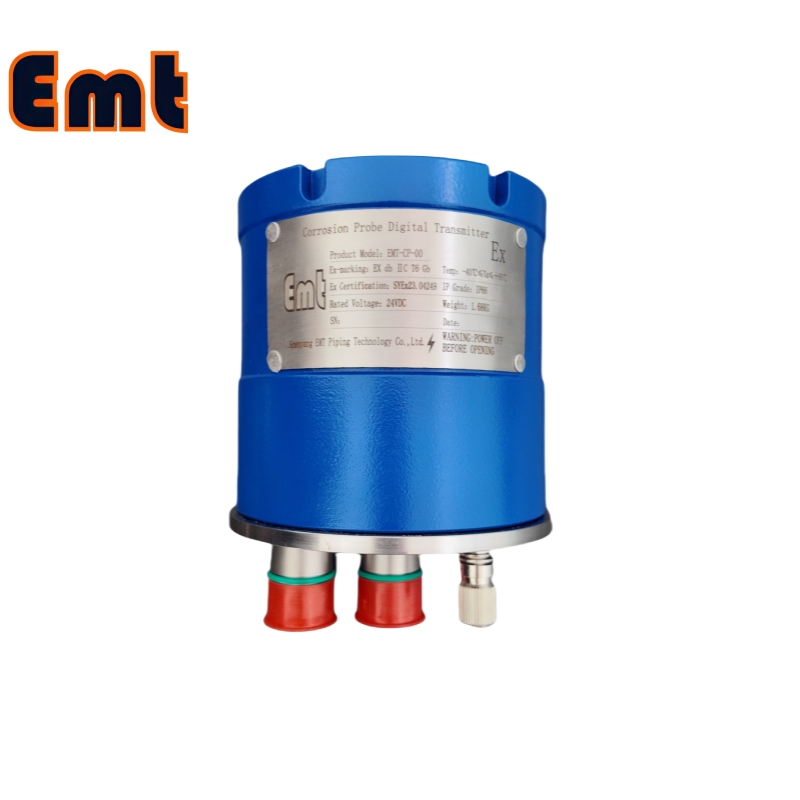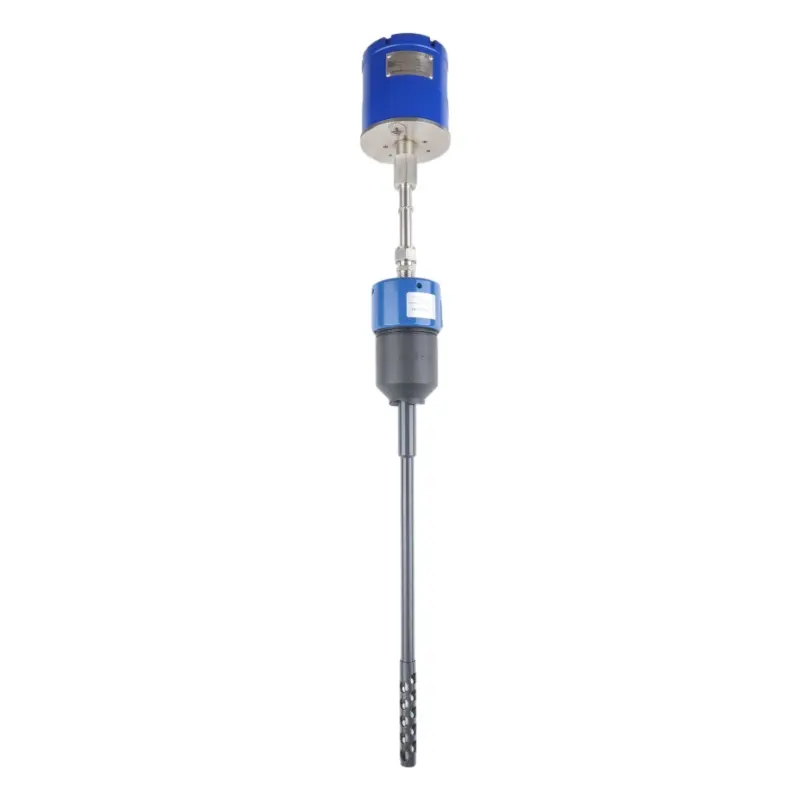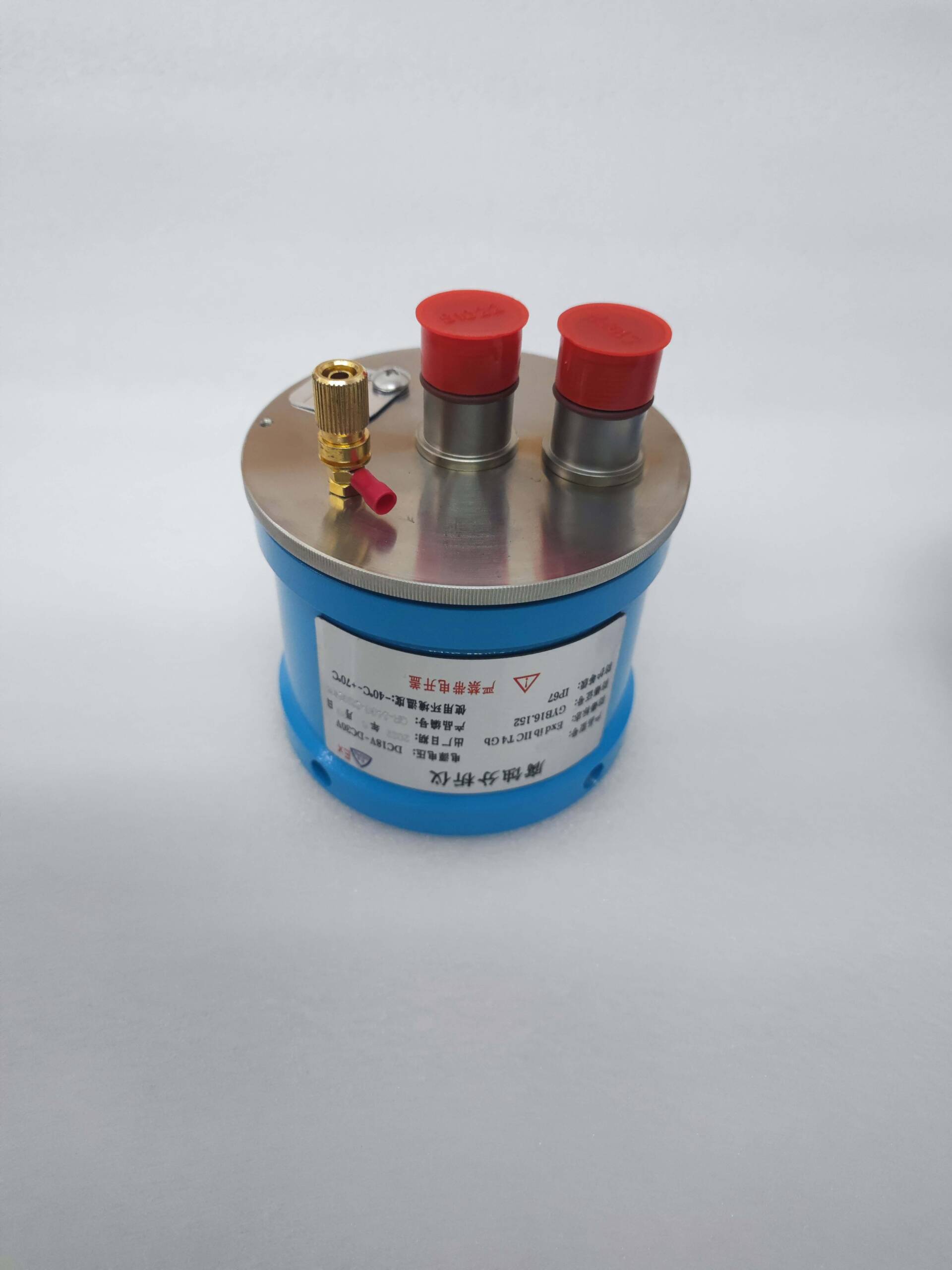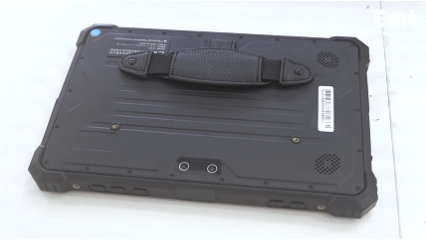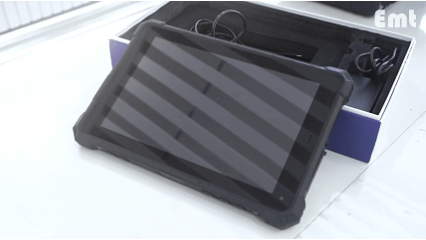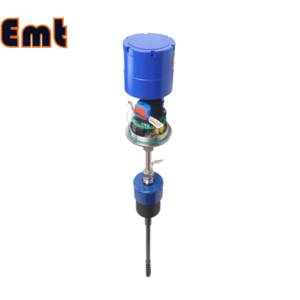Description
The EMT On-line Corrosion Monitoring Remote Data Collector can measure the corrosion rate of metal in various environments and output it to the upper computer system in real time through related protocols.
Technical Principles and Features
Based on the principle of the reluctance method, we calculate the corrosion loss rate by measuring the change in reluctance caused by metal corrosion. The online corrosion monitoring data collector addresses the limitations of electrochemical methods by offering high measurement sensitivity, fast response, and strong anti-interference capabilities. It operates effectively in both liquid and gas environments, whether in electrolytic or non-electrolytic corrosion conditions. Engineers and researchers widely use this system for real-time, On-line Corrosion Monitoring of corrosion rates in metal pipes across various environments. Additionally, they apply it in laboratories for evaluating corrosion inhibitors and in the field for controlling their injection.
Output Parameter
It mainly converts the corrosion probe’s analog signal into a digital signal. The system uses a four-wire RS-485 communication protocol. This standard protocol simplifies debugging at the installation site. It also improves compatibility with other system configurations. The external inductive corrosion probe uses 18-bit resolution. In contrast, a conventional resistance probe only reaches 10-bit resolution. Therefore, the inductive probe offers significantly higher resolution. The built-in precise temperature compensation system ensures that the probe is not sensitive to temperature changes.
What Is Online Corrosion Monitoring
Online corrosion monitoring constantly assesses industrial material integrity. It does so without disrupting normal system operations. This method employs various sensors and probes. These devices integrate directly into infrastructure like pipelines, storage tanks, and structural components. Online monitoring’s main advantage is its real-time corrosion data provision. This enables immediate reactions to potential issues.
Industries where corrosion can cause failures find online monitoring crucial. For example, it prevents pipeline leaks in the oil and gas industry. These leaks could cause catastrophic environmental and financial damage. In water treatment plants, it maintains water system quality. It also avoids costs linked to unexpected repairs. Online systems provide continuous feedback. This feedback optimizes maintenance schedules. It also aids the timely application of corrosion inhibitors and other protective measures.
Online monitoring also supports infrastructure longevity and sustainability. It helps develop more effective corrosion management strategies. Engineers use data to identify patterns and predict material lifespans under specific conditions. This predictive ability boosts industrial safety and reliability. It also helps protect the environment by preventing unplanned pollutant discharges. The integration of monitoring technologies is vital. It improves asset management across sectors. This drives economic efficiency and regulatory compliance improvements.
The EMT-CP Resistance Corrosion Online Detection System
The EMT-CP system features online corrosion monitoring with remote data collection, serving as a key element of the resistance corrosion online detection system. This system is engineered for real-time monitoring and begins its process by accurately measuring changes in the electrical resistance of corrosion probe elements. As corrosion progresses, these elements become progressively thinner.
These corrosion-sensitive elements are made from materials similar to those used in the monitored pipelines or equipment. By closely monitoring the reduction in thickness of these elements, the EMT-CP can accurately calculate the corrosion rate of the actual infrastructure being monitored. This approach offers a relentless and precise evaluation of corrosion, thereby eliminating the dependency on periodic manual inspections.
Additionally, the EMT-CP is equipped with an explosion-proof structure, making it ideal for use in the potentially volatile conditions typical of the petrochemical industry.
Corrosion Monitoring Corrosion Probe
| Product Specifications | |
| Brand Name: | EMT Pigging |
| Product Name: | Resistance Probe |
| Material: | Stainless Steel 316, L DUPLEX SS |
| Size: | 3″ x 3/4″ x 1/16″ |
| Design Temperature: | -20℃ to 200℃ |
| Design Pressure: | 0 to 26 MPa |
| Keyword: | High Pressure Hydrogen Probe |
| Feature: | High Accuracy and Low Cost |
| Certification: | ISO 9001 |
| Additional Technical Details | |
| Metal Material: | Stainless Steel 316, L DUPLEX SS |
| Sealing Material: | Teflon/Fluororubber/Viton O-ring |
| Access Fitting Body: | 2”welded; 2”ANSI Flange (suffix “pressure rating & pipe size & sealing type can meet customer needs) |
| Protective Cover: | PTFE Coated |
| Flange Size: | ANSI 2″RF (or RJ) |
| Body Material: | CS,304SS,316SS,316LSS,DUPLEX SS |
| Nozzle Material: | 304SS,316SS,316LSS,DUPLEX SS |
| Packaging and Delivery | |
| Selling Units: | Single item |
| Package Size: | 10 x 4 x 2 cm (different products have different sizes) |
| Gross Weight: | 1.000 kg |
| Payment and Warranty | |
| Payment Terms: | TT/LC |
| Warranty: | 1.5 years |
| Customized Support | |
| Options: | OEM, ODM services available to tailor the probe to specific industrial needs. |
The Difference Between Corrosion Inspection And Corrosion Monitoring
Corrosion inspection and monitoring are often confused but serve different roles in maintenance and safety. Corrosion inspection involves scheduled, manual checks of equipment for signs of corrosion. Its main goal is to evaluate corrosion severity and decide on necessary repairs or replacements. These inspections are vital for identifying potential issues that could affect structural and functional integrity.
In contrast, corrosion monitoring like the EMT-CP Online Corrosion Monitoring system is dynamic and continuous. It uses specialized technology to constantly measure and analyze corrosion, providing crucial real-time data for immediate action. This continuous oversight allows for rapid measures to control and minimize corrosion effects. The aim of monitoring is not just to detect corrosion but to manage and prevent it by updating preventive strategies based on current data, enhancing infrastructure longevity and safety.
Both practices are essential but differ in timing and scope. Corrosion inspection provides condition snapshots at specific times, while monitoring offers a continuous view of corrosion trends, promoting proactive maintenance. This approach can significantly reduce downtime and repair costs by enabling early interventions. Moreover, systems like the EMT-CP boost operational efficiency and safety, highlighting the importance of technological integration in modern industrial strategies.
On-line Corrosion Monitoring Corrosion Probes
| Model | |||||||||||||||
| ECP | Electrical Resistance Probes | ||||||||||||||
| -Code | Plug | ||||||||||||||
| Type | Material | Sealing material | |||||||||||||
| 0 | Not Required | 0 | Carbon steel | 0 | Not Required | ||||||||||
| 1 | Hollow plug | 1 | 316 stainless steel | 1 | Fluorine rubber sealing ring/PTFE main seal | ||||||||||
| 2 | 316L stainless steel | 2 | HNBR | ||||||||||||
| 3 | F51 duplex stainless steel | ||||||||||||||
| Pxxx | 4 | INCONEL nickel based alloy | |||||||||||||
| -Code | Temperature and pressure gauge assembly | ||||||||||||||
| Txxx | Connection size | Body material | Temperature and pressure gauge material | ||||||||||||
| 0 | Not Required | 0 | 304 stainless steel | 0 | Not Required | ||||||||||
| 1 | 1/2″ | 1 | 316 stainless steel | 1 | 304 stainless steel | ||||||||||
| 2 | 3/4″ | 2 | 316L stainless steel | 2 | 316 stainless steel | ||||||||||
| 3 | F51 duplex stainless steel | ||||||||||||||
| -Code | Probe assembly | ||||||||||||||
| Dxx | Connection size | Body material | Pipeline specification (x ″) | ||||||||||||
| 0 | Not Required | 0 | Carbon steel | Probe length varies with pipeline specifications | |||||||||||
| ‐Lx″ | 1 | 1/4″ | 1 | 304 stainless steel | |||||||||||
| 2 | 1/2″ | 2 | 304L stainless steel | ||||||||||||
| 3 | 316 stainless steel | ||||||||||||||
| 4 | 316L stainless steel | ||||||||||||||
| 5 | F51 duplex stainless steel | ||||||||||||||
| Example: ECP-P121-T021-D02-L6 “ | |||||||||||||||


